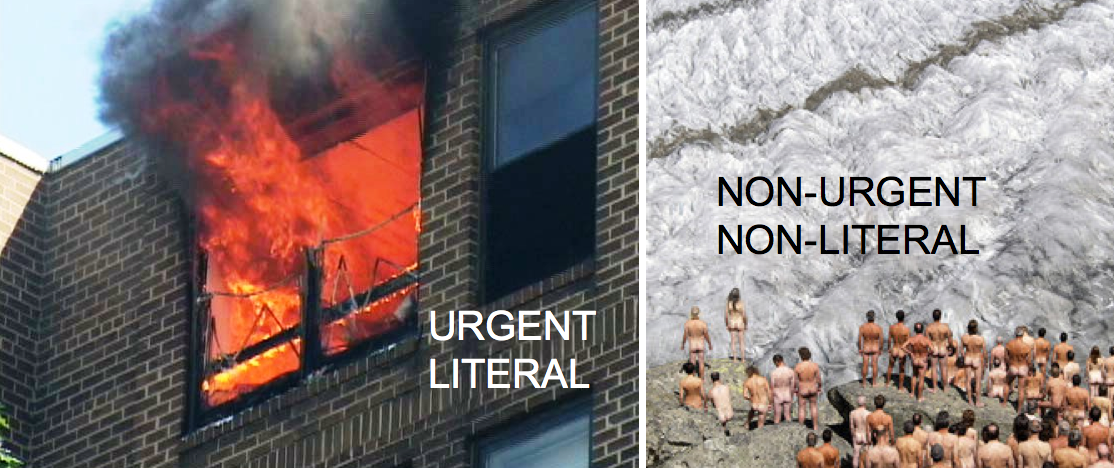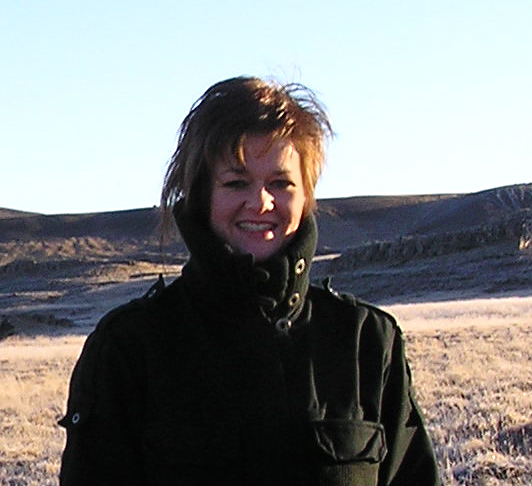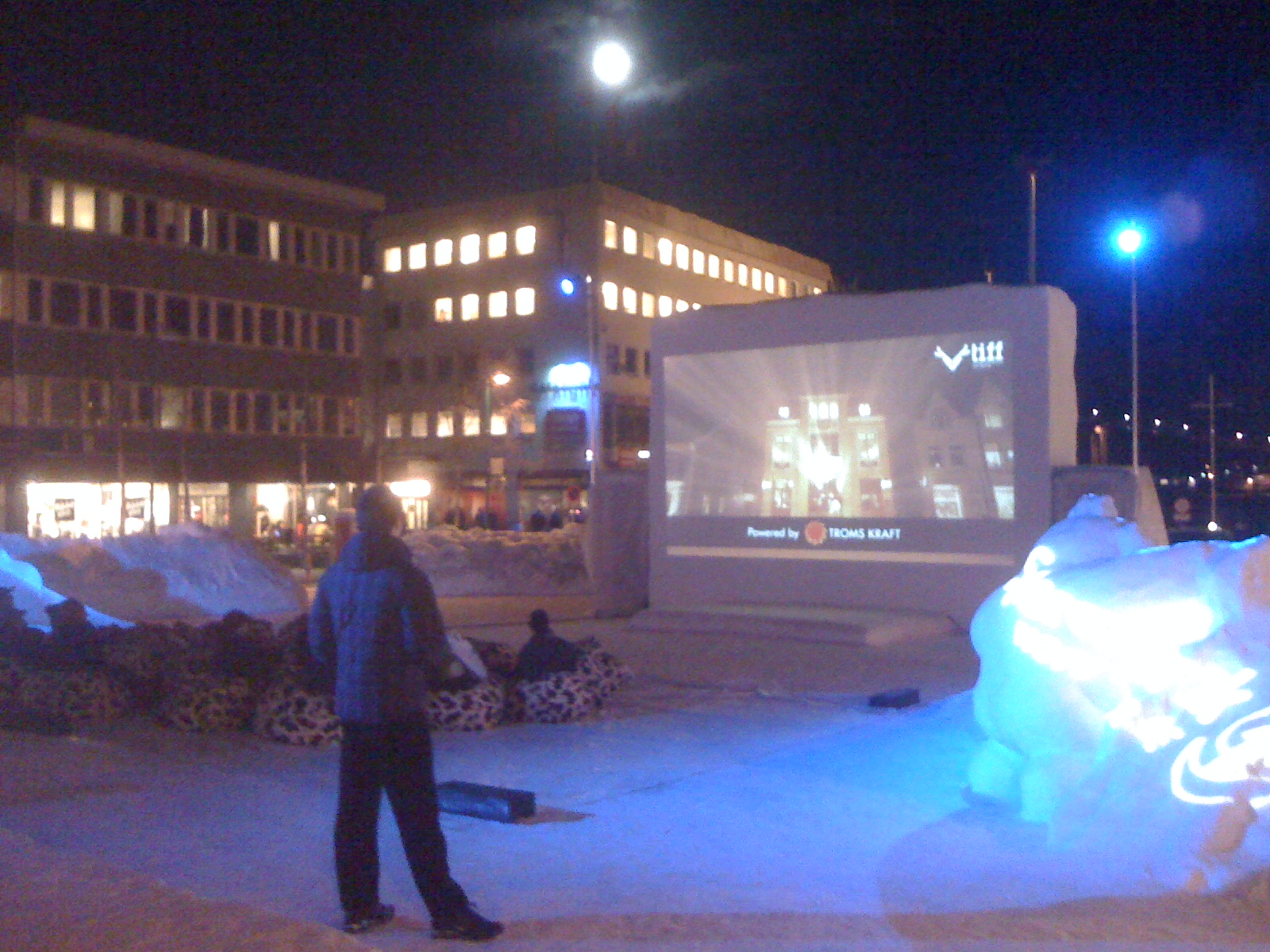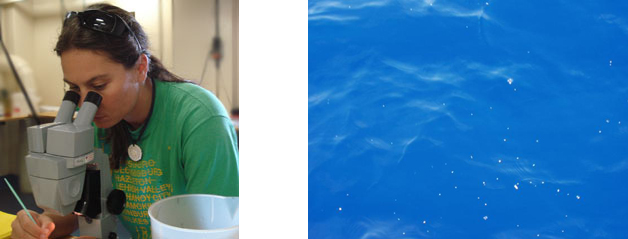#109) How to NOT Communicate Global Warming to the Public
January 31st, 2011
Environmentalists (and scientists) have followed no clear overall plan in trying to motivate the general public about global warming. Here’s at least a simple “model” worth considering before dumping more millions of dollars into failed media.
.
If an issue is urgent, it needs literal-minded communication that gets right to the point — “Your building is on fire, get out!”. But if an issue is non-urgent (like climate change consequences that are 20 years off) then it needs non-literal communication — which means using humor, emotion and stories — anything to arouse the disinterested audience.
Read the rest of this entry »
#108) NORWAY 5: They BREED Excellence in Scandinavia
January 27th, 2011
First, the Norwegian students made a stunning set of videos. Then, on their own, they made a “Making Of” video for the projects. Now, they are promoting the workshop’s accomplishments in the Norwegian media, AND they are meeting with administration officials to change their system to do more. Just amazing.
However, here’s a little clip that shows how everything I now say must be taken with a grain of salt. My brain may have been damaged by the death virus I caught that gave me a fever of two million degrees (as Gilda Radnor as Roseanna Roseanna Danna used to say, “I thought I was gonna DAH”). But you can hear the impact of the educational experience in my voice.
#107) NORWAY IV: The 9th Iteration of My Three-Day Videomaking Workshop
January 25th, 2011
This was the main reason I came to Tromso, Norway in the dead of winter — to run my videomaking workshop for 25 Arctic science graduate students. The experience has spun my head around. I’ve been getting fed up with the dilution and lack of understanding of the word “innovation” in the U.S. science community. This 10 day visit has sealed the deal for me. I’ll be writing an essay on the subject next week. Americans have a skewed, impoverished concept of what “innovation” is. But for now, have some fun and watch the work of these very talented AND creative SCIENCE graduate students. THIS is how science communication to the general public is meant to be.
.
Let’s get right to the entertainment. Here are the 5 finished student videos, the result of one day of planning, one day of filming, and one day of editing, this past Friday to Sunday. This place had EXCEPTIONAL resources for the workshop, both in equipment and people. But then it’s Scandinavia — so what, big surprise.
#106) NORWAY III: Trying to Reason with the Warming Season
January 24th, 2011
Warming is almost universally accepted here, but have the signs of it really arrived yet? Um, yes.
.
Last night was the opening evening of events for the Arctic Frontiers Conference — the biggest of the seemingly endless series of workshops, meetings and symposia (including the Nordic Science Communicators Conference, the Association of Polar Early Career Scientists (APECS), the Young Scientists Forum, and the Tromso International Film Festival) happening during my amazing, surreal 10 day visit here to the waaaay north in the deepest, darkest part of the Arctic winter night (and no, there haven’t been any Northern Lights alerts — apparently the sun is not cooperating lately).
ARE WE ALL CLEAR ON WHERE IN THE WORLD TROMSO, NORWAY IS? It’s not just “up there.” In one of the northernmost countries, it is their northernmost major city — well above the Arctic Circle, as I have been aware of every minute of my 10 days here. In theory, the sun is back. It should have began appearing in the southern sky for a few minutes around midday starting two days ago, but you could have fooled me. It’s been overcast and snowing, though not brutally cold as it’s mostly hovered just around freezing most days with the streets sometimes a little slushy from some melting, which seems to annoy the locals — once winter starts, they prefer a nice, comfortable, consistent blanket of dry snow. And by the way, Tromso is home to the northernmost brewery in the world, as is pointed out to me every night at the pub as another round of drafts is picked up by one of the students justifying another toast to the northernmost brewery. My paternal grandfather was Norwegian and moved to the U.S. in 1910, but you’d never know it from my inability to keep up with these folks. Sheesh.
Read the rest of this entry »
#105) NORWAY II: Should we strip an Icelandic woman scientist of her character through media training?
January 20th, 2011
Do we really want “sameness” in the communication of science?
HOW MANY PEOPLE END UP IN A SITUATION WHERE THE ENTIRE WORLD WANTS TO HEAR THEIR THOUGHTS? Dr. Rikke Pederson of the Nordic Volcanological Laboratory at the University of Iceland became one in April of last year when “her volcano” erupted. She ended up being one of three key science spokespersons for the issue. But does she still need “media training”?
Read the rest of this entry »
#104) NORWAY I: A Hippocratic Oath for Science Communicators
January 19th, 2011
Where there is “bo-ho-horedom,” there is poor communication at work. A Hippocratic oath is needed that says there are no boring subjects, only failed communicators.
FROSTED FLICKS. A group of hearty souls sit in beanbag chairs in 25 degree weather for an outdoor screening beneath the moon at the Tromso International Film Festival (where “Sizzle” is screening twice). Needless to say, I asked that my movie be shown at the indoor cinema.
.
#103) Why is no one criticizing the release of this photo?
January 17th, 2011
We are a fear-driven species. So why let the police add to the fire? And what does this have to do with oil and gas exploration in northern Norway?
Am I the only person in the country who feels the Tucson Police should be criticized for releasing this photo of Jared Loughner? Could they not have said, “Quit smiling,” and taken different photo? There is a narrative element to this image, playing into the pre-existing fears of a fear-driven society, and thus adding to the noise that is increasingly crippling.
Read the rest of this entry »
#102) Dr. Angel White: It’s Mid-Course Correction Time for the “Plastics in the Ocean” Issue
January 10th, 2011
A research scientist steps into the communication side of the plastics issue in an effort to improve the accuracy of what is being said to the general public. The environmental community should be thankful.
L – Dr. Angel White, Microbiologist, Oregon State University; R – Floating plastic debris, but would you call this a patch or an island? (Photo: Drew/Algalita)
.
#101) A “Salt of the Earth” Tribute to Kick off the New Year!
January 4th, 2011
A big THANKS to all the great people of the University of Maine, the Robbins brothers, and John McEuen for helping put together a great and memorable evening last fall.






